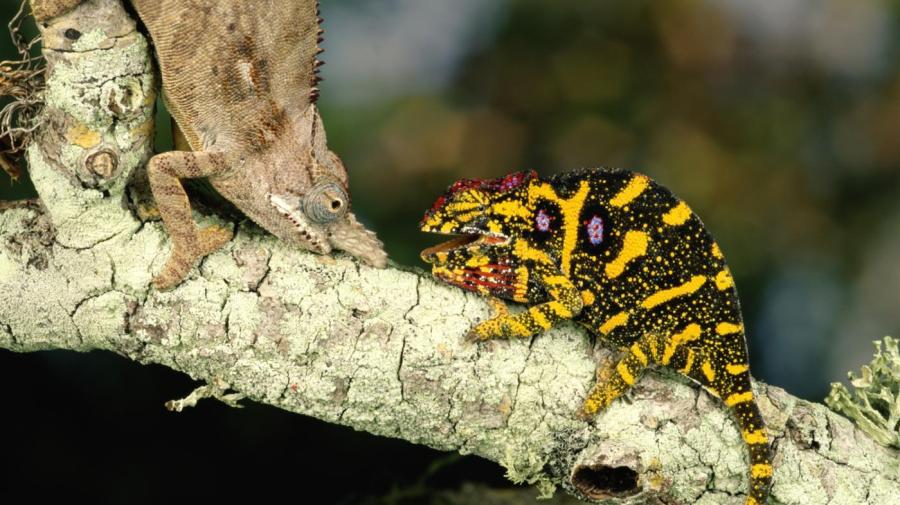How Do Chameleons Reproduce?

Female chameleons are inseminated from the male by means of a hemipenis, which is an organ containing two tubular structures. The male circles the female, grabs her neck in his mouth, mounts her back and inserts his penis into her cloacal opening. The entire process last about 13 minutes.
According to the University of Michigan Museum of Zoology, female chameleons continue to mate for up to 11 days, but never mate more than once a day with the same male. The majority of chameleons lay eggs 22 to 34 days after insemination and bury them in cool, moist sand for protection against competitors. A clutch of eggs varies in size, but 35 to 85 eggs is a reasonable estimate. According to The Chameleon Company, depending on the species, chameleon babies hatch between 180 and 390 days. The hatching process lasts from a few days to several months, depending on seasonal climate changes that occur during that period.
According to the San Diego Zoo, the Jackson’s chameleon is a species that gives live birth to 18 to 30 babies. Following birth, the babies immediately begin to hunt for insects rather than receive food from the female. This live-birth adaptation allows Jackson’s chameleons to survive in the colder mountain regions in Tanzania and Kenyon.





